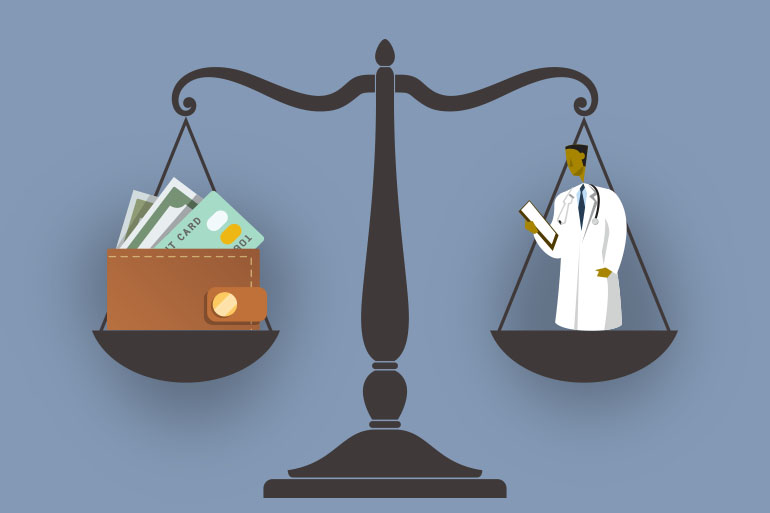For most of my adult life, I’ve picked my health insurance based on one simple standard: Does my beloved primary care physician participate in the plan?
I’m lucky. My generous job-based coverage has allowed me to make that choice without straining my finances.
But that luck isn’t universal, and as Covered California consumers face steep rate hikes next year, some will be forced to make a difficult choice: pay a higher price to keep their plans — and doctors — or switch plans to save money but risk losing their doctors.
“The great news is that most consumers have the ability to insulate themselves from premium increases and keep their monthly costs level from the previous year,” says Caroline Pearson, a senior vice president at Avalere Health, a health policy consulting firm in Washington, D.C.
“But that might require them to switch plans.”
Covered California recently announced that its 2017 premiums will jump an average of 13.2 percent statewide.
Because health plan prices vary across the state, you may face rate hikes that are lower or higher based on where you live, how much money you make, which insurer you choose and other factors.
Roughly four of five Covered California consumers will be able to pay less than they do now or cap their rate increases at 5 percent if they shop around and buy the lowest-cost plan at their current benefit level, the agency says.
In other words, Covered California — and other exchanges around the country — are rewarding flexibility and encouraging consumers to reassess their options each year, even though the reality is that many people just don’t want to switch.
“Most people are not going to want to shop around. They love their doctor because their doctor has cured some of their illnesses or put them on a better path to health,” says Tom Freker, an insurance broker in Fountain Valley who has about 300 clients with Covered California policies.
To be clear, this dilemma isn’t unique to Covered California, and it predates the Affordable Care Act. But in the past two years, Covered California enrollees, with some exceptions, have been insulated from huge rate increases.
In 2016, 14 percent of returning enrollees switched plans.
That compares with 43 percent in the federal exchange, healthcare.gov.
The reason for that difference is that California’s rate increase was “substantially lower than those seen in most states across the nation,” says Covered California’s Executive Director Peter Lee.
Next year’s rate hikes mean that Covered California customers might need to adapt to a new reality.
Or, as Diana Dooley, secretary of the state Health and Human Services Agency, says: “This will be a real test to see what matters to people. Will they change doctors? For people who don’t go to the doctor very much, maybe they will.”
Covered California spokesman James Scullary says that “changing plans does not always mean changing providers.” But, he acknowledges, “it could for some consumers.”
Covered California is helping consumers navigate their choices by allowing them to easily compare plans, costs and benefits, Scullary says. The exchange also plans to add an online provider directory in time for the next open enrollment period, which starts Nov. 1. The directory will allow consumers to search for physicians by name.
Freker fears his clients will be hit particularly hard because about 70 percent of them currently have Blue Shield of California plans. Blue Shield’s average rate hike next year will be 19.9 percent, the largest among participating insurers.
He says he will urge his clients to consider other plans or switch from a PPO to an HMO. But he predicts that most of his clients will keep their plans and move to a lower level of coverage with cheaper premiums, which should allow them to keep their doctors.
Beth Capell, a lobbyist for Health Access California, a consumer advocacy group, also urges consumers to consider other plans or HMOs. She points to the HMO giant Kaiser Permanente, which will have an average statewide increase of 6 percent, less than half the overall Covered California increase.
Kevin Knauss, an insurance agent in Sacramento who handles about 200 Covered California policies, believes his healthier clients will be open to switching.
“People will make changes, especially if they don’t actually go to the doctor very often,” he says. “Those people that are currently under treatment, they just don’t want to sacrifice that doctor-patient relationship.”
If you’re in the latter category, find out which Covered California plans cover your doctor, he says, because it’s possible your doctor participates in more than one.
And don’t forget to check drug formularies, because the prescription medications you’re currently taking may not be covered by the plan you’re considering.
“You can get hit really hard if that drug isn’t on the formulary and you have to pay out of pocket,” Knauss says.
Finally, just about everyone agrees on an option that might allow you to keep your plan and dodge bigger rate hikes: If you make between 138 percent and 250 percent of the federal poverty level, you are eligible for cost-sharing subsidies, which reduce your out-of-pocket expenses, in addition to the tax credits that lower your monthly premiums.
You have to sign up for a silver-tier plan in order to get this benefit, but if you qualify, you should do it, Knauss advises.
“There’s just nothing better on the market,” he says. “It’s like getting a bump up to a gold or platinum plan.”
